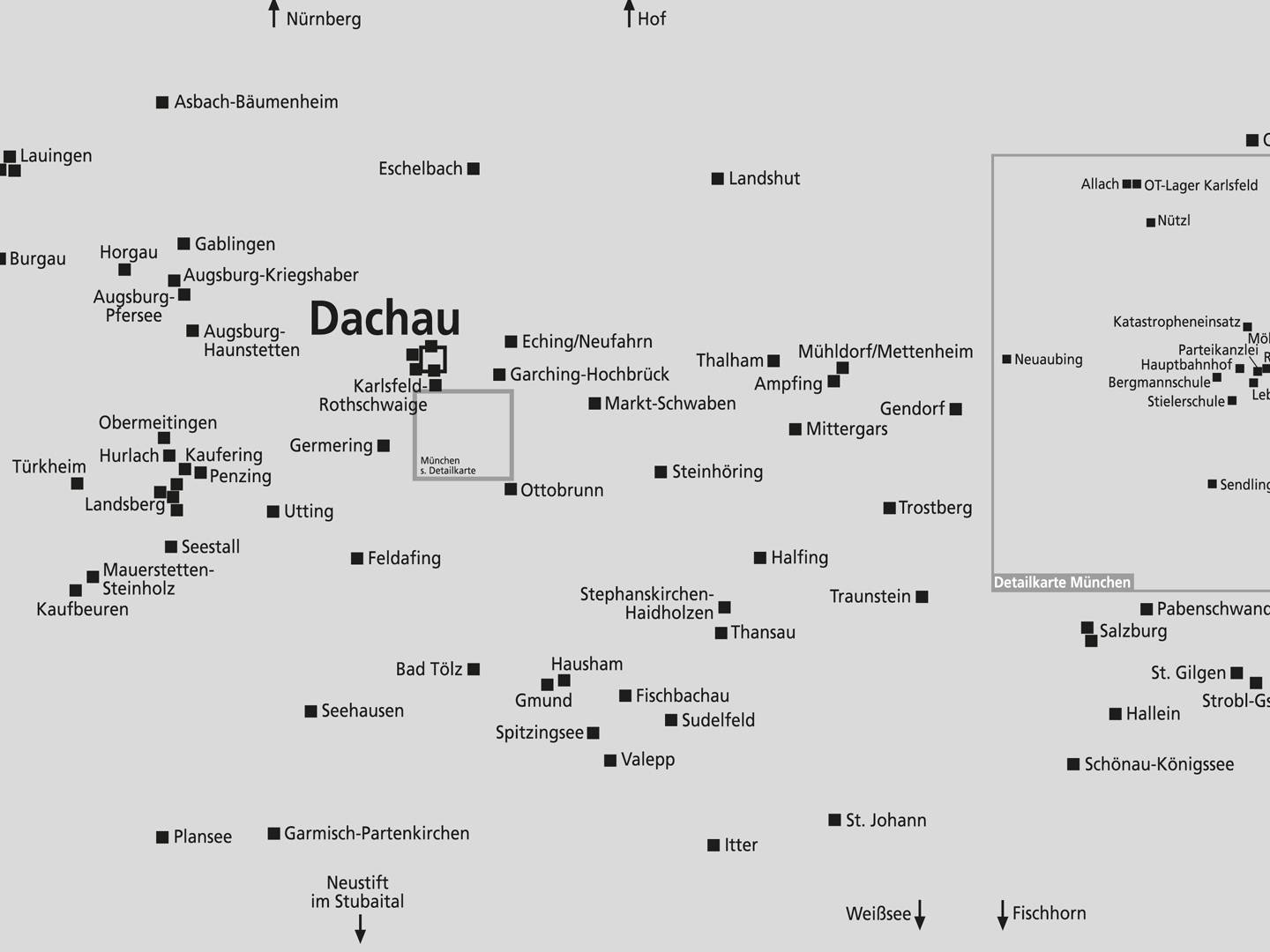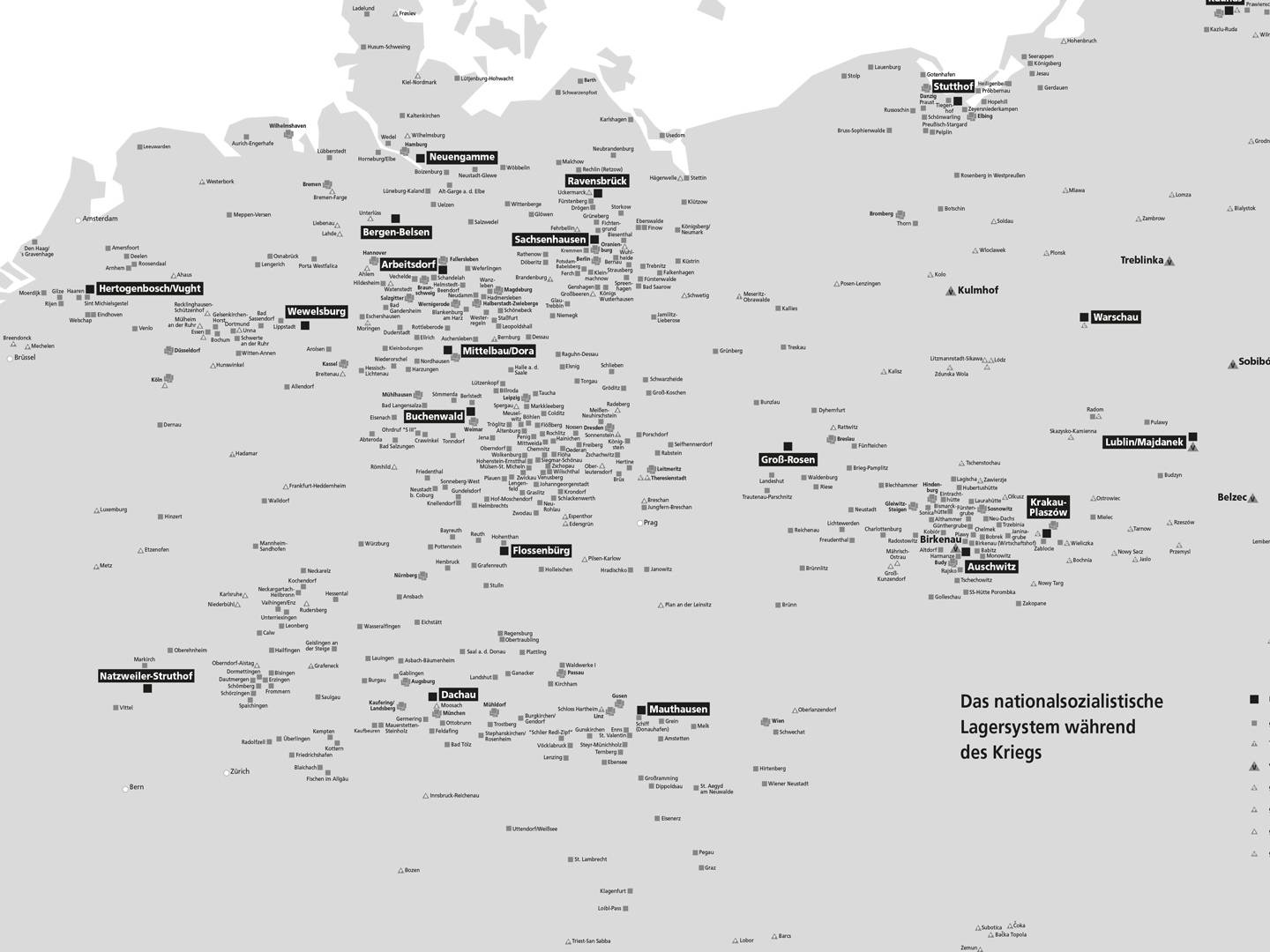Concentration Subcamp System
A large number of concentration subcamps and concentration camp work teams, some of which were located several hundred kilometres from their main camp, were under the control of each concentration camp. Their construction was linked to the deployment of forced labour camps. This made it necessary to accommodate the prisoners outside the main camp.
In particular in the 1930’s work teams with between one and several dozen concentration camp prisoners working outside the camp during the day were accommodated in buildings already existing at the work location. After the start of the war in 1939 and increasingly from 1943 concentration subcamps for the armaments industry were created, in which sometimes several thousands of – predominantly Jewish – prisoners were accommodated in barracks camps.
You are currently viewing a placeholder content from Default. To access the actual content, click the button below. Please note that doing so will share data with third-party providers.
More InformationThus, an extensive network of concentration subcamps was created. In January 1945 more than 500 concentration subcamps were in existence in Europe. Life in the camps was dominated by hard labour and poor food and accommodation. The prisoners had to dig galleries, construct buildings, remove rubble or work in armaments production. Government agencies and private companies were involved in the construction of most of the concentration subcamps. Frequently, therefore, the population of these places were confronted for the first time with concentration camp prisoners.
One hundred and forty locations of concentration camp forced labour units with accommodation outside the main camp have been proven for the Dachau concentration camp. Several thousands of people died in these concentration subcamps. The exact number is unknown.



